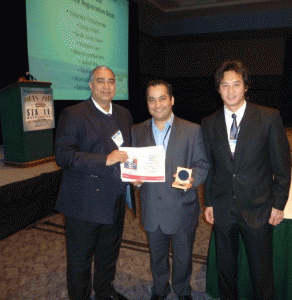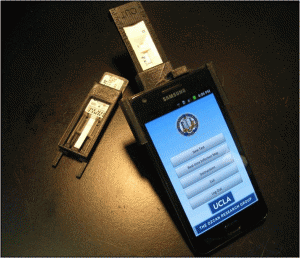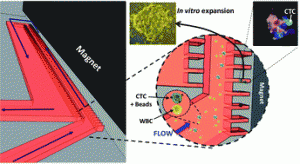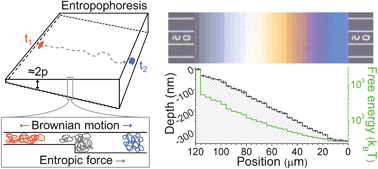 Issue 8 is now available online, and the front cover features a HOT communication from Sungyoung Choi, Jeffrey M. Karp and Rohit Karnik at the Massachusetts Institute of Technology, Cambridge, USA. The article demonstrates the group’s use of deterministic cell rolling to sort cells in a label-free, gentle manner.
Issue 8 is now available online, and the front cover features a HOT communication from Sungyoung Choi, Jeffrey M. Karp and Rohit Karnik at the Massachusetts Institute of Technology, Cambridge, USA. The article demonstrates the group’s use of deterministic cell rolling to sort cells in a label-free, gentle manner.
Cell sorting by deterministic cell rolling
Sungyoung Choi, Jeffrey M. Karp and Rohit Karnik
DOI: 10.1039/C2LC21225K
The inside front cover features a HOT paper from Chang Lu and colleagues, which outlines the group’s use of total internal reflection fluorescence flow cytometry (TIRF-FC) to quantitatively measure quantum dot uptake into cells at a single cell level.

Quantitative measurement of quantum dot uptake at the cell population level using microfluidic evanescent-wave-based flow cytometry
Jun Wang, Yihong Zhan, Ning Bao and Chang Lu
DOI: 10.1039/C2LC21298F
Other HOT papers in the issue include:
Microfluidics meets soft layer-by-layer films: selective cell growth in 3D polymer architectures
Narayanan Madaboosi, Katja Uhlig, Stephan Schmidt, Magnus S. Jäger, Helmuth Möhwald, Claus Duschl and Dmitry V. Volodkin
DOI: 10.1039/C2LC40058H
Gene-Z: a device for point of care genetic testing using a smartphone
Robert D. Stedtfeld, Dieter M. Tourlousse, Gregoire Seyrig, Tiffany M. Stedtfeld, Maggie Kronlein, Scott Price, Farhan Ahmad, Erdogan Gulari, James M. Tiedje and Syed A. Hashsham
DOI: 10.1039/C2LC21226A
DNA electrophoresis in a nanofence array
Sung-Gyu Park, Daniel W. Olson and Kevin D. Dorfman
DOI: 10.1039/C2LC00016D
Also in this issue is the ninth instalment of our Acoustofluidics series – this issue’s article focuses on the design, construction and applications of planar resonant devices for acoustic manipulation of particles and cells.
Acoustofluidics 9: Modelling and applications of planar resonant devices for acoustic particle manipulation
Peter Glynne-Jones, Rosemary J. Boltryk and Martyn Hill
DOI: 10.1039/C2LC21257A
Finally, this issue sees the start of a new Focus article series from Tony Jun Huang that will discuss bio-related issues that impact on lab on a chip and microfluidic research. The first article focuses on microfluidic devices for diagnostics in the developing world.
Microfluidic diagnostics for the developing world
Xiaole Mao and Tony Jun Huang
DOI:10.1039/C2LC90022J
Read the rest of issue 8 now!


















 icle
icle Siva Vanapalli and colleagues at Texas Tech University have developed a one-step passive strategy to create concentration gradients in static droplet arrays. Their recent Lab on a Chip article has been reported in PhysOrg.com, which discusses the implications of the technology for the future of drug testing.
Siva Vanapalli and colleagues at Texas Tech University have developed a one-step passive strategy to create concentration gradients in static droplet arrays. Their recent Lab on a Chip article has been reported in PhysOrg.com, which discusses the implications of the technology for the future of drug testing. Samuel Stavis and colleagues at the National Institute of Standards and Technology (NIST) have developed a nanoscale fluidic channel shaped like a staircase, which can be used to control the direction of drift of a DNA molecule through a fluid. An article in Nanotechnology Now discusses how this ‘nanoslinky’ presents new possibilities for manipulating and measuring DNA.
Samuel Stavis and colleagues at the National Institute of Standards and Technology (NIST) have developed a nanoscale fluidic channel shaped like a staircase, which can be used to control the direction of drift of a DNA molecule through a fluid. An article in Nanotechnology Now discusses how this ‘nanoslinky’ presents new possibilities for manipulating and measuring DNA.
